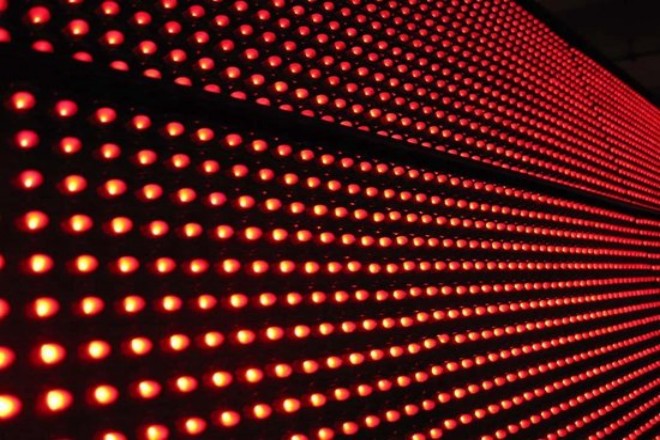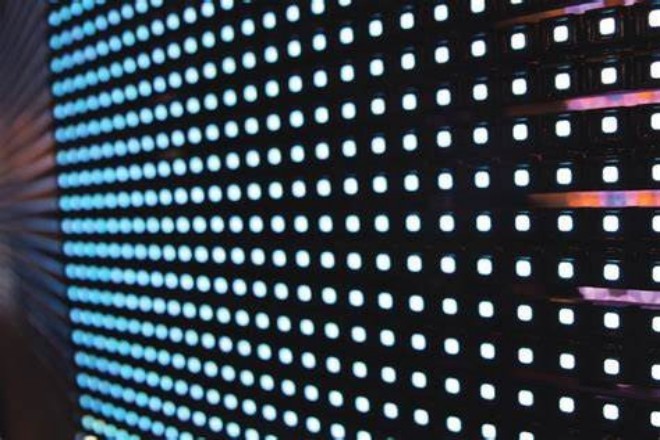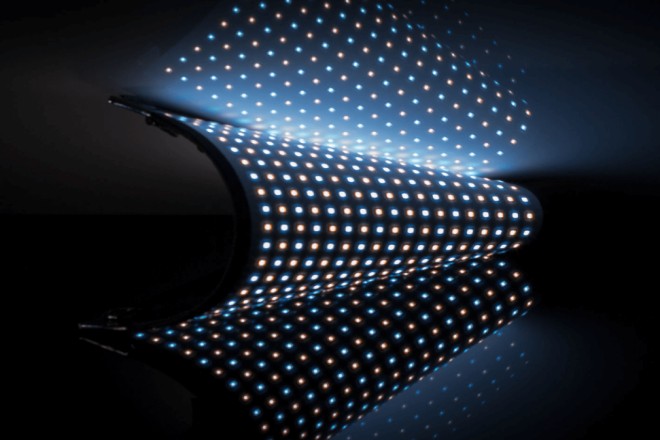مقدمة

مع حلول موسم الأمطار، أصبح حراس شاشة عرض LED هل أنت قلق بشأن مشكلة مقاومة الرطوبة لحبيبات المصباح؟ إن البيئة ذات الرطوبة العالية تشبه قاتلًا غير مرئي، حيث تتسبب بهدوء في تآكل قلب شاشة العرض - حبيبات المصباح، مما يهدد نقل المعلومات والعرض المرئي.
لا تقلق؛ ستكشف هذه المقالة عن سر حبات مصباح شاشة العرض LED المقاومة للرطوبة في موسم الأمطار وتقدم سلسلة من الحلول العملية والفعالة.
من اختيار التصميم إلى التركيب والصيانة إلى المعالجة الطارئة، سنشرحها واحدة تلو الأخرى لمساعدتك على التعامل بسهولة مع تحديات موسم الأمطار وضمان التشغيل المستقر والعمر الطويل لشاشة العرض.
اتبع خطواتنا لجعل شاشة العرض LED الخاصة بك لا تزال تتألق في موسم الأمطار وتصبح دعمًا قويًا لنقل المعلومات!
1. فهم الأسباب التي تجعل حبات مصباح شاشة العرض LED رطبة
1) بيئة ذات رطوبة عالية:
تخيل أنه عندما تكون في حمام رطب أو في الخارج مبللاً بعد المطر، يكون الهواء مليئًا بالرطوبة.
وبالمثل، إذا ظلت شاشة العرض LED في بيئة ذات رطوبة عالية لفترة طويلة، وخاصة عندما تنخفض درجة حرارة الهواء، فإن الرطوبة سوف تتكثف إلى قطرات ماء صغيرة على سطح شاشة العرض.
إذا لم يكن ختم الشاشة جيدًا بما فيه الكفاية، فقد تتسرب قطرات الماء هذه إلى الداخل وتتلامس مع المكونات مثل حبات المصباح، مما يتسبب في رطوبتها.
2) عدم كفاية الختم:
عند تركيب أو صيانة شاشات LED، يجب عليك التأكد من سد جميع الفجوات بشكل صحيح. إذا كان السد قديمًا أو تالفًا أو غير محكم التثبيت أثناء التركيب، فستبقى فجوات.
هذه الفجوات تشبه الأبواب الصغيرة التي تسمح للعوامل الخارجية مثل المطر والرطوبة بالدخول بسهولة إلى داخل الشاشة. وبمجرد ارتفاع الرطوبة الداخلية، ستتأثر المكونات الحساسة مثل حبات المصباح.
3) التكاثف الناتج عن اختلاف درجات الحرارة:
تخيل أنك في يوم شتوي بارد، تخرج من الخارج إلى غرفة دافئة، وقد تتكاثف الرطوبة في نظارتك على الفور. وذلك لأن اختلاف درجات الحرارة يتسبب في تكاثف الرطوبة في الهواء.
وبنفس الطريقة، عندما تكون شاشة LED في بيئة ذات فرق كبير في درجة الحرارة بين الداخل والخارج، فقد يتكون التكثيف أيضًا على سطحها.
إذا لم يتم التعامل مع هذا التكثيف في الوقت المناسب، فقد يتسرب إلى داخل الشاشة ويؤدي إلى إتلاف حبات المصباح.
4) الصيانة غير السليمة:
الصيانة اليومية ضرورية للحفاظ على شاشات LED في حالة جيدة. إذا استخدمت قطعة قماش مبللة بشكل مفرط أو طرق غير مناسبة عند التنظيف، فقد تترك بقع الماء على سطح الشاشة. إذا لم يتم التنظيف لفترة طويلة، فإن بقع الماء والغبار ستختلط معًا لتكوين أوساخ يصعب إزالتها، مما يزيد من خطر الرطوبة على الشاشة.
2. الاحتياطات اللازمة للتعامل مع الرطوبة على حبات مصباح شاشة LED

1) اختر شاشة LED ذات أداء جيد في مقاومة الرطوبة
1.1) أهمية مستوى حماية الملكية الفكرية العالي:
- مستوى حماية الملكية الفكرية:
هذا هو المعيار الدولي لقياس مقاومة المنتج للغبار والماء. على سبيل المثال، يعني IP65 أن المنتج محمي تمامًا من الغبار، ولن يتسبب رش الماء من أي اتجاه في إتلاف الجزء الداخلي.
يعد اختيار شاشة ذات مستوى حماية IP مرتفع مثل وضع طبقة مقاومة للماء على شاشتك، مما يحميها من التأثر حتى في الأيام الممطرة أو في البيئات الرطبة.
- سمات:
تستخدم هذه الشاشات عادةً مواد وتصميمات خاصة، مثل الإطارات المعدنية المقاومة للتآكل والحلقات المطاطية المقاومة للماء، بالإضافة إلى الألواح الخلفية المحكمة الغلق. كما تتم معالجة حبات المصابيح ولوحات الدوائر الكهربائية الخاصة بها بشكل خاص للعمل بثبات في البيئات الرطبة.
1.2) المواد المقاومة لدرجات الحرارة العالية ومضادة للأكسدة:
- مقاومة درجات الحرارة العالية:
ستولد الشاشة قدرًا معينًا من الحرارة عند العمل. إذا لم تكن المادة مقاومة لدرجات الحرارة المرتفعة، فقد تتشوه أو تتقدم في العمر. يمكن أن يضمن اختيار المواد المقاومة لدرجات الحرارة المرتفعة أن شاشة العرض يمكن أن تعمل بثبات في بيئات ذات درجات حرارة عالية ولن تتلف بسبب درجات الحرارة الزائدة.
- مضاد للأكسدة:
تتمتع المواد المضادة للأكسدة بالقدرة على مقاومة تآكل الأكسجين وغيره من المواد المؤكسدة في الهواء، مما يمنع سطح المادة من تغير اللون أو فقدان اللمعان. وهذا مهم بشكل خاص لشاشات العرض التي تتعرض للبيئات الخارجية لفترة طويلة.
1.3). تصميم حبة المصباح الدقيقة:
- ختم حبة المصباح:
تعد حبات المصباح أحد المكونات الرئيسية لشاشة العرض، ويؤثر إحكام إغلاقها بشكل مباشر على مقاومة الرطوبة لشاشة العرض. يمكن أن يضمن تصميم حبات المصباح الدقيقة أن كل حبات المصباح ملفوفة بإحكام في مواد مقاومة للماء لمنع بخار الماء من الاختراق.
- استقرار:
بالإضافة إلى مقاومة الرطوبة، يمكن أن يعمل تصميم حبات المصباح الدقيقة أيضًا على تحسين استقرار حبات المصباح وعمرها الافتراضي. وعادةً ما تتمتع بأداء أفضل في تبديد الحرارة ومقاومة الصدمات ويمكنها العمل بشكل طبيعي في بيئات قاسية مختلفة.
2) تحسين بيئة التثبيت
2.1). بيئة جيدة التهوية وجافة:
- تهوية:
يمكن أن تساعد التهوية الجيدة في تقليل الرطوبة البيئية وتقليل تراكم بخار الماء. عند تركيب شاشة العرض، تأكد من وجود مساحة كافية حولها لتدوير الهواء.
- جفاف:
تجنب تركيب شاشة العرض في المناطق الرطبة أو المعرضة للماء، مثل الأقبية والأنهار وما إلى ذلك. إذا كانت البيئة نفسها رطبة نسبيًا، فيمكنك التفكير في استخدام معدات مثل مزيل الرطوبة لتقليل الرطوبة.
2.1) تجنب التكثيف الناتج عن اختلاف درجات الحرارة:
- التحكم في فرق درجة الحرارة:
سيؤدي تكييف الهواء المباشر إلى انخفاض حاد في درجة حرارة سطح الشاشة، مما يؤدي إلى تكوين تكاثف. لذلك، عند تركيب الشاشة، تجنب وضعها بالقرب من مخرج الهواء الخاص بمكيف الهواء.
- اجراءات العزل:
في بيئة ذات فارق كبير في درجات الحرارة، يمكنك التفكير في تركيب طبقة عازلة للشاشة أو استخدام مواد عازلة أخرى لتقليل تأثير فارق درجات الحرارة. يمكن أن يمنع هذا تكوّن التكثيف ويحمي الشاشة من التلف.
3) تعزيز معالجة الختم
3.1). استخدام الغراء المقاوم للماء وشرائط الختم:
- غراء مقاوم للماء:
أثناء عملية التثبيت، يجب وضع الغراء المقاوم للماء على الأجزاء الرئيسية مثل محيط الشاشة والخزانة ومفصل الخزانة. يمكن للغراء المقاوم للماء ملء الفجوة وتشكيل حاجز مقاوم للماء لمنع بخار الماء من اختراق الجزء الداخلي من الشاشة.
- شرائط الختم:
من المهم أيضًا اختيار مواد شرائط الختم عالية الجودة وتثبيتها بشكل صحيح. يجب أن تتمتع شرائط الختم هذه بمرونة جيدة وخصائص مانعة للتسرب، وأن تكون قادرة على التكيف مع تشوه وحركة الشاشة في بيئات مختلفة.
يمكن أن يوفر هيكل الأنبوب المجوف تأثيرات تخفيف وختم أفضل، في حين أن معدل الضغط المنخفض والاستطالة العالية عند الكسر يعني أن شريط الختم يمكنه الحفاظ على أداء مستقر في الاستخدام طويل الأمد.
3. الصيانة اليومية والعناية بحبات مصباح شاشة LED
بالنسبة لشاشات العرض LED، فإن الصيانة والعناية اليومية هما مفتاح ضمان تشغيلها المستقر على المدى الطويل وإطالة عمرها الافتراضي. فيما يلي بعض تدابير الصيانة والعناية المحددة:
1.1) إزالة الرطوبة بشكل منتظم
- إزالة الرطوبة في موسم الأمطار:
في موسم الأمطار، بسبب ارتفاع نسبة الرطوبة في الهواء، من السهل أن يتراكم بخار الماء حول شاشة العرض. لذلك، يجب استخدام مكيفات الهواء أو أجهزة إزالة الرطوبة بانتظام لإزالة الرطوبة من البيئة المحيطة بشاشة العرض والحفاظ على البيئة جافة.
- إزالة الرطوبة الداخلية:
بالإضافة إلى البيئة الخارجية، قد يتولد بخار الماء أيضًا داخل شاشة العرض بسبب اختلافات درجات الحرارة، أو ضعف الغلق، وما إلى ذلك. في هذا الوقت، يمكن وضع مادة مجففة داخل شاشة العرض، أو تشغيل وظيفة إزالة الرطوبة من شاشة العرض (إن وجدت) لامتصاص وإزالة الرطوبة الداخلية.
1.2) التنظيف المنتظم
- تنظيف الغبار:
من المهم جدًا تنظيف الغبار الملتصق بالجزء الداخلي والخارجي لشاشة العرض بشكل منتظم.
لا يؤثر الغبار على كفاءة تبديد الحرارة لشاشة العرض فحسب، بل يزيد أيضًا من مساحة ربط بخار الماء ويسرع من شيخوخة شاشة العرض.
عند التنظيف، استخدم قطعة قماش ناعمة للمسح برفق، وتجنب استخدام المذيبات الكيميائية والمنظفات القوية لتجنب إتلاف سطح الشاشة.
- ملحوظة:
أثناء عملية التنظيف، انتبه بشكل خاص إلى تجنب تناثر الماء أو السوائل الأخرى مباشرة على الشاشة لتجنب حدوث ماس كهربائي أو أي أضرار أخرى.
1.3). تجنب عدم الاستخدام لفترة طويلة
- الإضاءة وإزالة الرطوبة:
قد يؤدي عدم استخدام الشاشة لفترة طويلة إلى تراكم الرطوبة بداخلها. لذلك، يجب إبقاء الشاشة مغلقة لأطول فترة ممكنة.
في المناطق الرطبة، يوصى بإضاءة الشاشة مرة واحدة يوميًا؛ وفي المناطق الجافة، يمكن إضاءتها ثلاث مرات تقريبًا في الأسبوع، في كل مرة لمدة ساعتين تقريبًا. سيساعد القيام بذلك على تبديد الرطوبة الداخلية من خلال حرارة الشاشة نفسها.
1.4). التفتيش والصيانة
- التفتيش المنتظم:
تأكد بانتظام من سلامة أسلاك توصيل الشاشة وأسلاك الطاقة والمشعات والمكونات الأخرى، واستبدل المكونات التالفة في الوقت المناسب لضمان التشغيل العادي للشاشة.
- التفتيش الداخلي:
في البيئات الرطبة، من الضروري أيضًا التحقق بانتظام من عدم حدوث تكاثف أو صقيع أو غير ذلك داخل الشاشة. بمجرد العثور على هذه المشكلات، يجب اتخاذ التدابير على الفور لمنع الرطوبة من إتلاف الشاشة بشكل أكبر.
- الصيانة المهنية:
بالإضافة إلى الفحص والصيانة اليومية، يجب دعوة المحترفين لإجراء فحص شامل وصيانة لشاشة العرض بانتظام. يمكنهم استخدام المعدات والطرق المهنية للكشف عن المشكلات المحتملة وإصلاحها، مما يضمن أن شاشة العرض دائمًا في أفضل حالة.
4. تدابير العلاج الطارئة

1) التعامل بعد دخول الماء أو الرطوبة
1.1). قم بقطع التيار الكهربائي على الفور.
أهمية: أولاً وقبل كل شيء، قم بفصل التيار الكهربائي عن شاشة العرض على الفور. وذلك لمنع حدوث ماس كهربائي، وبالتالي تجنب المزيد من الأضرار والمخاطر الأمنية المحتملة.
عملية: ابحث بسرعة عن مفتاح الطاقة وقم بفصله للتأكد من إيقاف تشغيل شاشة العرض بالكامل.
1.2) امسح منطقة الخوض برفق
اختيار الأداة: استخدم منشفة أو قطعة قماش نظيفة، خالية من النسالة، وذات قدرة على الامتصاص.
طريقة التشغيل: امسح المناطق الرطبة أو المبللة من الشاشة برفق لامتصاص معظم الرطوبة على السطح. تجنب استخدام القوة المفرطة لتجنب الخدوش أو التلف للشاشة.
1.3). جفف شاشة العرض.
اختيار الأداة: قم بتشغيل وضع إزالة الرطوبة من مكيف الهواء أو استخدم جهاز تجفيف مثل المروحة (لاحظ أنها ليست منفاخ هواء ساخن).
طريقة التشغيل: اضبط مكيف الهواء على وضع إزالة الرطوبة وتأكد من أن مخرج الهواء لا ينفخ مباشرة على الشاشة. وفي الوقت نفسه، يتم استخدام مروحة لنفخ الهواء على شاشة العرض لتسريع تبخر بخار الماء الداخلي. انتبه إلى الحفاظ على مسافة وسرعة رياح مناسبة لتجنب حدوث أضرار غير ضرورية للشاشة.
ملاحظة: إذا لم تنجح الطرق المذكورة أعلاه، فيجب عليك الاستعانة بفني صيانة محترف لإجراء الصيانة. تأكد من الاهتمام بالسلامة الكهربائية!
خاتمة
باختصار، يعد موسم الأمطار أمرًا بالغ الأهمية لعمل حبات مصباح العرض LED المقاوم للرطوبة.
من خلال اختيار التصميم العلمي، والتركيب والبناء الصارمين، والصيانة اليومية الدقيقة، والمعالجة الطارئة في الوقت المناسب، يمكننا حماية حبات مصباح العرض بشكل فعال من الرطوبة، وإطالة عمر خدمتها وتحسين تأثير العرض.
وأخيرًا، إذا كنت تريد معرفة المزيد عن شاشات العرض LED، يرجى الحصول على اتصال معنا.
